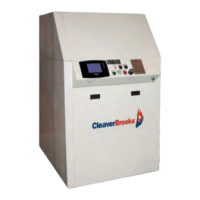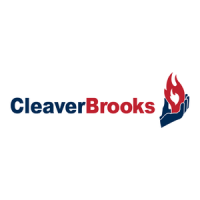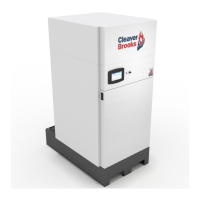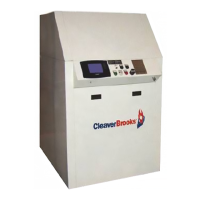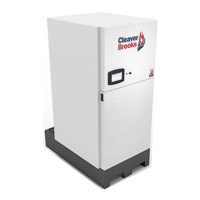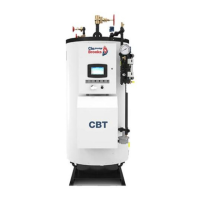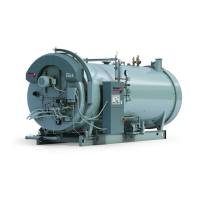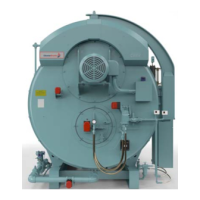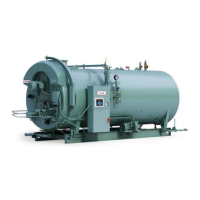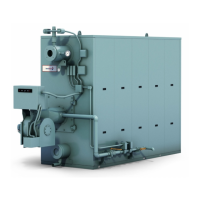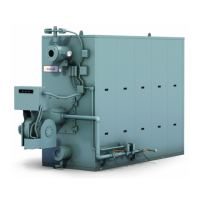750-265 34
Anticondensation
The anticondensation function reduces condensation effects
when the temperature is below a threshold by increasing the
firing rate and optionally shutting off the pump. This is not a
safety function.
Anticondensation operates only when the burner is firing, and
is active only if enabled for the demand source (i.e. CH, DHW)
currently controlling the burner.
The pump corresponding to that source will usually be on;
however, to warm the heat exchanger more quickly, that pump
may be forced off when anticondensation is active.
The anticondensation parameters are as follows:
Table 17. Anticondensation Parameters.
Parameter Comment
CH anticondensation enable Enable, Disable
This parameter enables or disables anticondensation for CH and LL demand.
CH anticondensation setpoint Degrees or None
If CH demand anticondensation is enabled, and if CH demand or LL slave demand is in
control of the burner, and the burner is firing, and if the temperature of the outlet sensor is
below the temperature given by this parameter:
then the anticondensation subsystem requests the burner’s firing rate to be set to the rate
given by the CH maximum modulation rate. Whether this succeeds or not depends on the
priority of anticondensation compared to other rate-reducing overrides (as described at the
beginning of “Rate Limits and Override” on page 29).
When the CH source sensor temperature reaches or exceeds the temperature given by this
parameter plus a fixed hysteresis value or 4°F then this rate override ends.
CH anticondensation pump
forceoff
Normal, Forced Off
If CH anticondensation is in control of the burner as described in the CH anticondensation
setpoint section above, and this parameter is forced off, the CH pump is turned off to warm up
the heat exchanger more quickly.
However, if CH frost protection, outlet high limit, or DHW high limit are active and requesting
the pump to be on, then it will remain on—these have higher priority. The pump reverts to its
normal condition when anticondensation ends.
DHW anticondensation enable Enable, Disable
This parameter enables or disables anticondensation for the outlet sensor when the DHW
loop is in control.
DHW anticondensation setpoint Degrees or None
If DHW demand anticondensation is enabled, and if DHW demand is in control of the burner,
and the burner is firing, and if the temperature of the outlet sensor is below the temperature
given by this parameter:
• Then the anticondensation subsystem requests the burner’s firing rate to be set to the rate
given by DHW maximum modulation rate. Whether this succeeds or not depends on the
priority of anticondensation compared to other rate-reducing overrides (as described at
the beginning of “Rate Limits and Override” on page 29).
• When the outlet sensor temperature reaches or exceeds the temperature given by this
parameter plus a fixed hysteresis value or 4°F then this rate override ends.
DHW anticondensation pump
forceoff
Normal, Forced Off
If DHW anticondensation setpoint is in control of the burner as described in the DHW
anticondensation temperature section above, and this parameter is forced off, the DHW
pump is turned off to warm up the heat exchanger more quickly.
However, if frost protection is active and requesting the pump to be on, then it will remain
on—this has higher priority. The pump reverts to its normal condition when anticondensation
ends.
